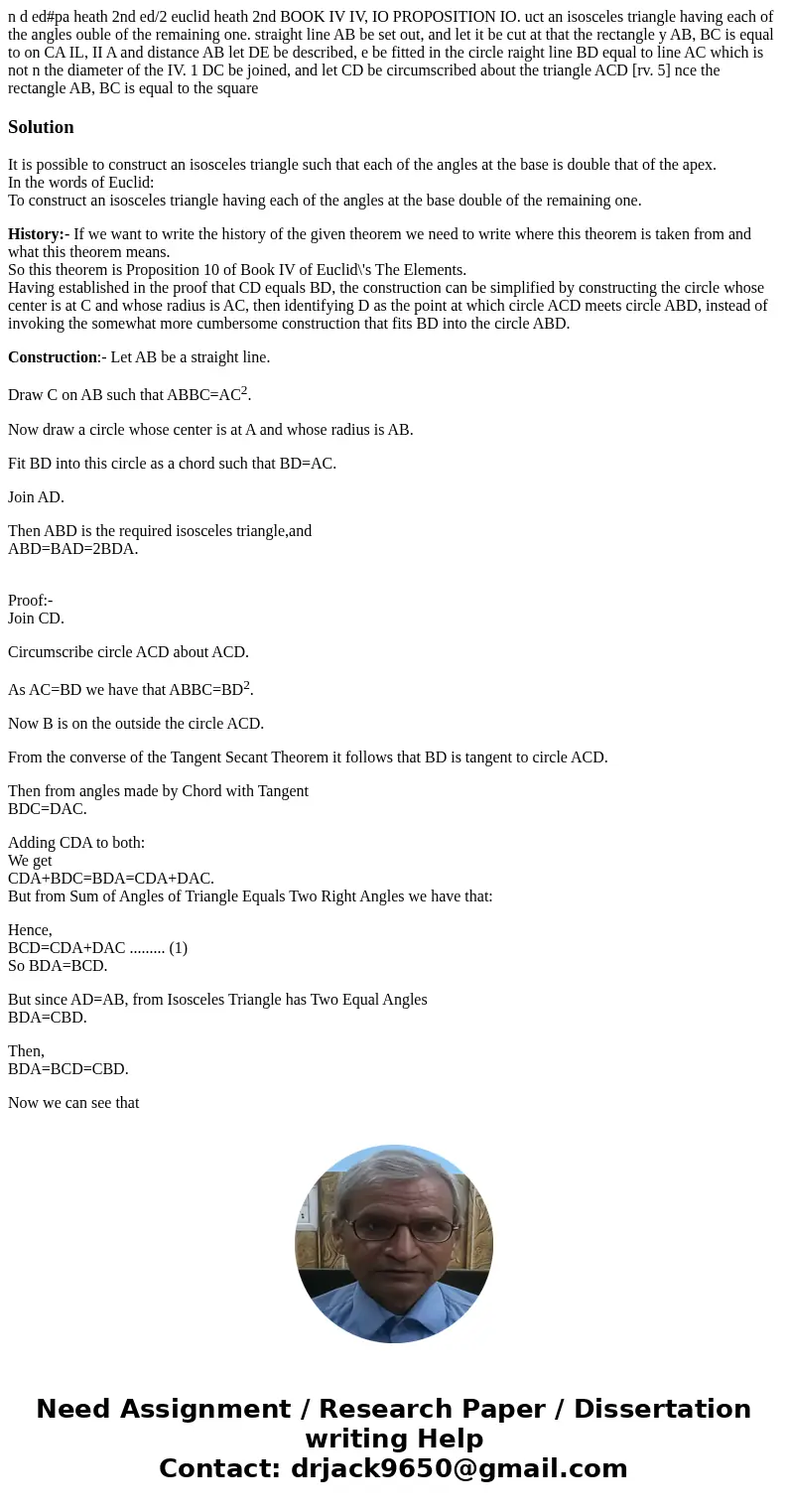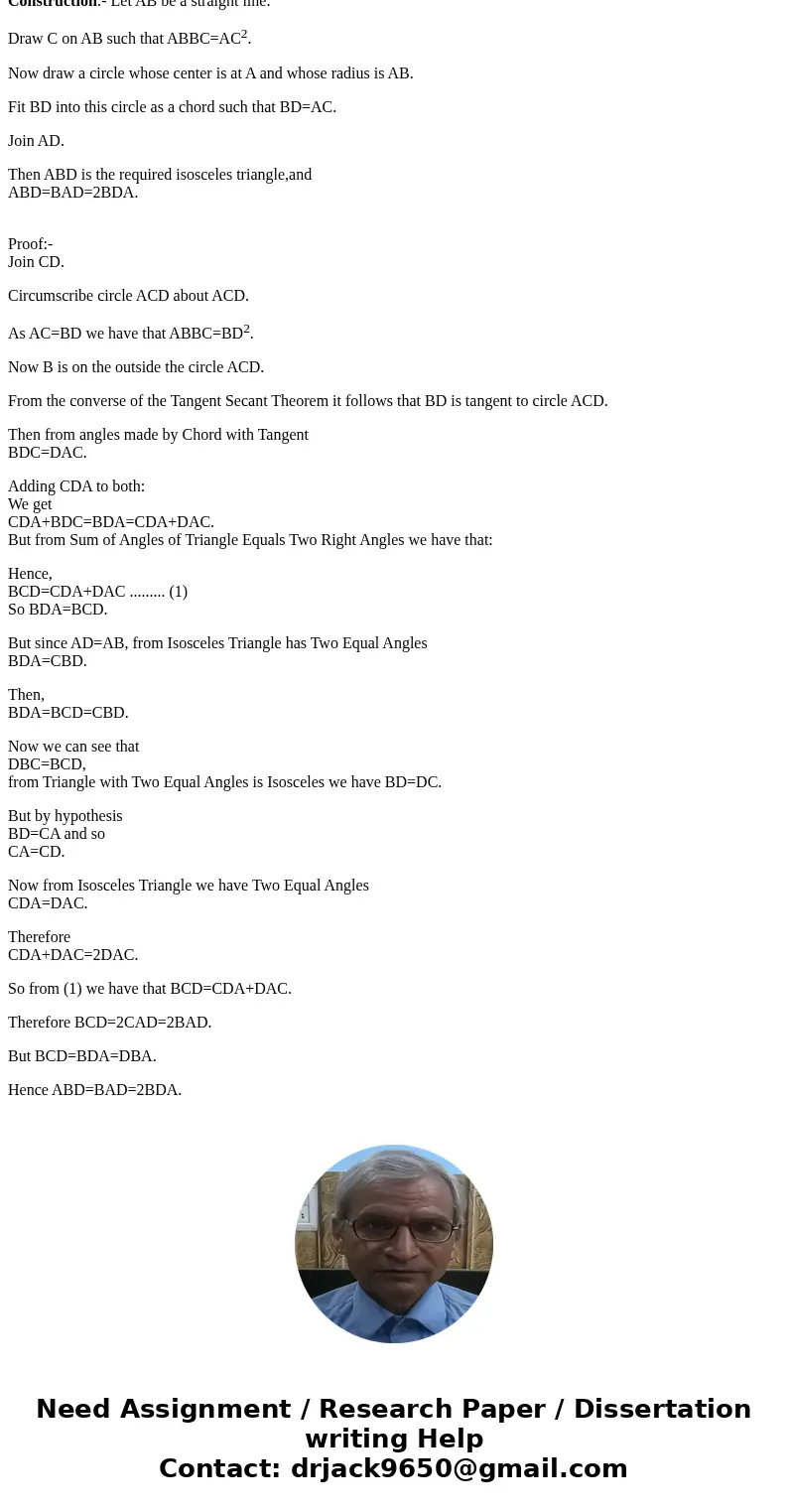n d edpa heath 2nd ed2 euclid heath 2nd BOOK IV IV IO PROPOS
Solution
It is possible to construct an isosceles triangle such that each of the angles at the base is double that of the apex.
In the words of Euclid:
To construct an isosceles triangle having each of the angles at the base double of the remaining one.
History:- If we want to write the history of the given theorem we need to write where this theorem is taken from and what this theorem means.
So this theorem is Proposition 10 of Book IV of Euclid\'s The Elements.
Having established in the proof that CD equals BD, the construction can be simplified by constructing the circle whose center is at C and whose radius is AC, then identifying D as the point at which circle ACD meets circle ABD, instead of invoking the somewhat more cumbersome construction that fits BD into the circle ABD.
Construction:- Let AB be a straight line.
Draw C on AB such that ABBC=AC2.
Now draw a circle whose center is at A and whose radius is AB.
Fit BD into this circle as a chord such that BD=AC.
Join AD.
Then ABD is the required isosceles triangle,and
ABD=BAD=2BDA.
Proof:-
Join CD.
Circumscribe circle ACD about ACD.
As AC=BD we have that ABBC=BD2.
Now B is on the outside the circle ACD.
From the converse of the Tangent Secant Theorem it follows that BD is tangent to circle ACD.
Then from angles made by Chord with Tangent
BDC=DAC.
Adding CDA to both:
We get
CDA+BDC=BDA=CDA+DAC.
But from Sum of Angles of Triangle Equals Two Right Angles we have that:
Hence,
BCD=CDA+DAC ......... (1)
So BDA=BCD.
But since AD=AB, from Isosceles Triangle has Two Equal Angles
BDA=CBD.
Then,
BDA=BCD=CBD.
Now we can see that
DBC=BCD,
from Triangle with Two Equal Angles is Isosceles we have BD=DC.
But by hypothesis
BD=CA and so
CA=CD.
Now from Isosceles Triangle we have Two Equal Angles
CDA=DAC.
Therefore
CDA+DAC=2DAC.
So from (1) we have that BCD=CDA+DAC.
Therefore BCD=2CAD=2BAD.
But BCD=BDA=DBA.
Hence ABD=BAD=2BDA.


 Homework Sourse
Homework Sourse